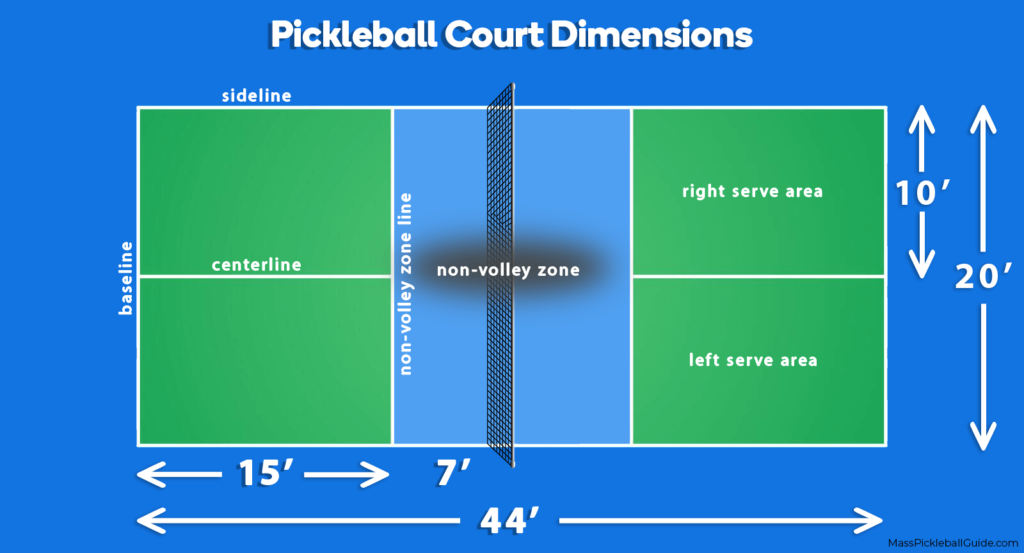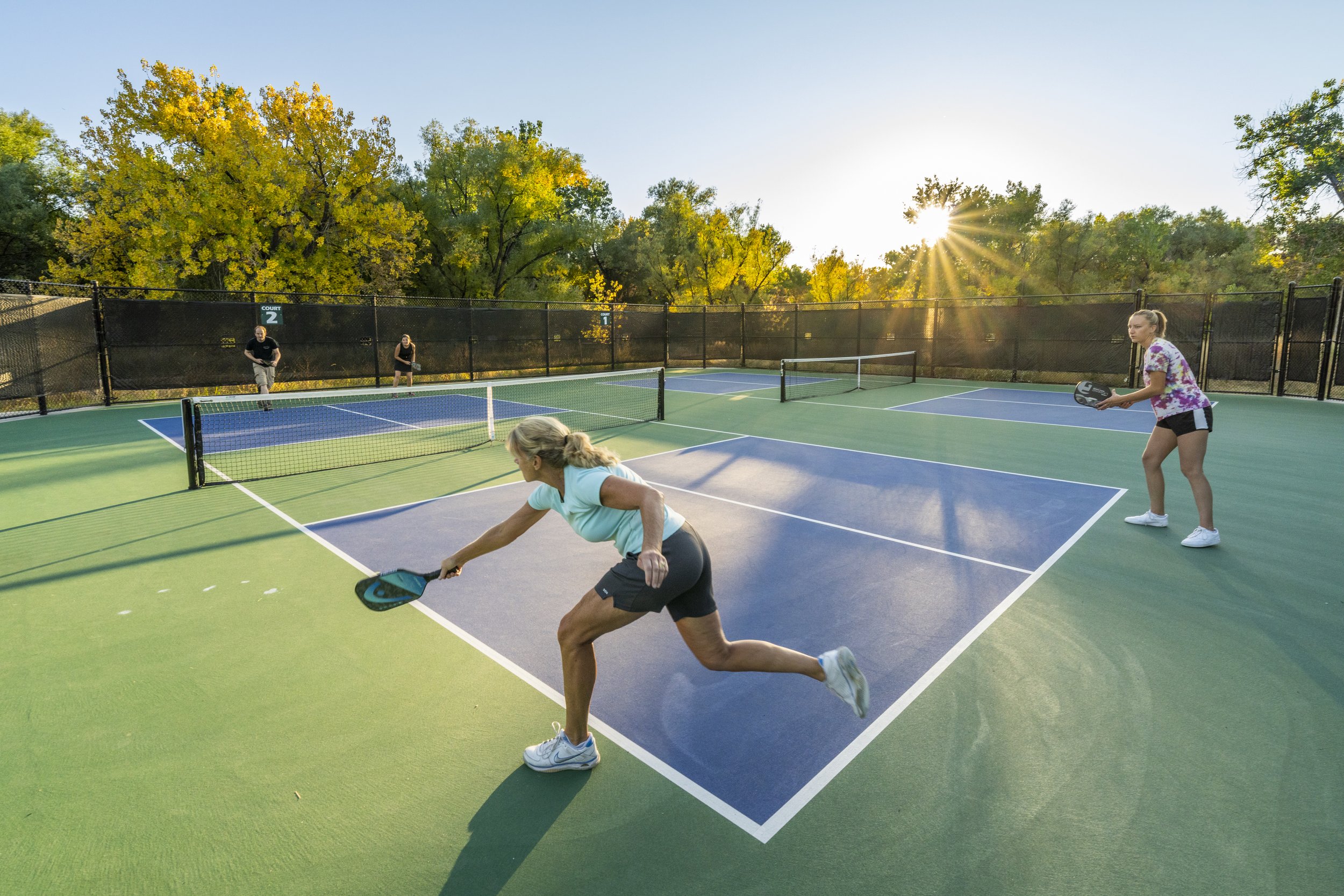How Local Rules Impact Your Pickleball Court Construction Plans
How Local Rules Impact Your Pickleball Court Construction Plans
Blog Article
Increase Citizen Engagement With Community-Driven Pickleball Court Projects
The emergence of community-driven pickleball court tasks presents a distinct possibility to cultivate regional involvement and strengthen neighborhood ties. By proactively including residents in the planning and execution phases, such efforts not only produce recreational areas however likewise advertise a common feeling of possession. Understanding the actions to start these jobs, consisting of reliable stakeholder interaction and resource appropriation, is vital. Nonetheless, the genuine concern continues to be: exactly how can these grassroots initiatives be strategically carried out to ensure sustainability and inclusivity in diverse neighborhoods? Checking out effective case research studies may supply the understandings needed to answer this critical worry.
Value of Neighborhood Engagement
Community engagement is a vital element in the effective advancement of pickleball court tasks, as it promotes a sense of ownership and cumulative obligation among homeowners. When neighborhood members are actively involved in the planning and execution phases, they are most likely to advocate for the task's lasting success. Involving stakeholders such as regional players, families, and entertainment groups makes certain that the facilities fulfill the diverse demands and preferences of the community.
Additionally, community involvement grows a helpful atmosphere where homeowners feel empowered to contribute their resources and concepts. Pickleball court construction. This collaborative technique can lead to innovative solutions that boost the layout and functionality of the courts, making them more enticing to a wider audience. Additionally, entailing homeowners in decision-making procedures can strengthen social connections, advertising inclusivity and unity within the neighborhood
The exposure of area support for a pickleball project can additionally play an essential role in protecting funding and approval from regional authorities. By demonstrating a shared dedication to leisure advancement, neighborhoods can properly support for resources and plan adjustments that prefer the establishment of pickleball courts, eventually enhancing the regional culture and recreational landscape.
Steps to Initiate a Task
Launching a pickleball court job requires a systematic strategy that builds on the structure of area involvement developed in previous discussions. The primary step is to assemble a task board making up neighborhood stakeholders, lovers, and agents from pertinent organizations. This diverse team makes sure that numerous viewpoints are considered.
Following, carry out a needs analysis within the neighborhood. Studies, focus groups, and public conferences can be effective in gauging passion and gathering input on prospective court areas, wanted features, and organizing preferences. Following this, create a job strategy describing timelines, obligations, and objectives.
When the strategy is in location, involve with local authorities to comprehend zoning laws and any necessary authorizations. Connecting transparently with the community throughout this process is essential, as it fosters depend on and urges additional involvement.
In addition, organizing neighborhood occasions can aid preserve momentum and excitement. These occasions can act as platforms for more discussion and assistance to strengthen community ties. Finally, record every step taken and keep in-depth documents, as this will certainly be useful for future phases of the task, including financing and resource purchase.
Funding and Resources Available
Protecting financing and sources for a pickleball court job is usually an essential step that can determine the task's expediency and success. Various opportunities exist for acquiring economic support, varying from public funding to personal sponsorships. City government grants, frequently focused on advertising neighborhood wellness and his comment is here recreation, can give considerable economic support for such campaigns.
In addition to government sources, not-for-profit organizations and foundations regularly use gives particularly for sporting activities and neighborhood development projects. Involving regional organizations as enrollers can additionally be a rewarding method; numerous firms are eager to purchase neighborhood campaigns that boost their corporate social obligation profile.
Crowdfunding systems have actually emerged as a sensible alternative for grassroots fundraising, allowing community members to add directly to the project. This technique not just raises funds however additionally cultivates a sense of possession visit the site amongst individuals.
Design and Preparation Considerations
Effective style and planning are basic components of any effective pickleball court project adhering to the procurement of funding and resources. A comprehensive assessment of the proposed area is vital; this includes examining ease of access, proximity to existing area facilities, and the possibility for visibility and involvement.
The design of the court need to follow official size specs while thinking about the surrounding atmosphere. Incorporating functions such as seats, shade structures, and proper lights can significantly improve gamer experience and spectator enjoyment. Products selected for the court surface area must focus on durability and safety, with options like acrylic or asphalt offering ideal performance.
Entailing community members in the style procedure cultivates a sense of possession and makes sure that the center satisfies local requirements - Pickleball court construction. This can be attained through public appointments and studies, permitting stakeholders to reveal their choices and issues
Sustainability needs to additionally be a priority; incorporating environmentally friendly materials and practices can add to lasting practicality. Finally, developing an upkeep strategy to make certain the court stays in superb condition will certainly sustain recurring community engagement and involvement in pickleball tasks.

Success Stories and Study
Highlighting the transformative impact of community-driven campaigns, numerous success stories highlight just how collective efforts have resulted in the development of lively pickleball courts throughout various areas. One remarkable example is the effort in a village in Florida, where homeowners united to transform an underutilized tennis court right into a dedicated pickleball center. Through fundraising occasions and collaborations with local companies, the neighborhood raised enough funds to webpage set up new nets, resurfacing, and lines, eventually cultivating a vibrant center for neighborhood gamers.
Likewise, in a rural location of California, a grassroots movement emerged to produce pickleball courts in a local park. The job not just engaged volunteers for building and construction but also consisted of workshops to engage neighborhood participants in the sporting activity. As a result, the courts came to be a prime focus for social communication and physical fitness, bring in players of every ages.
These study exemplify just how community-driven projects can improve local interaction, advertise exercise, and reinforce social bonds. By leveraging collective sources and excitement, neighborhoods can efficiently sustain and develop pickleball facilities that serve diverse populations and cultivate a sense of belonging.

Final Thought
By focusing on stakeholder participation throughout the preparation and application stages, these efforts can properly address diverse neighborhood demands. Inevitably, such initiatives add to the makeover of public areas into vibrant centers of health and fitness and social interaction, strengthening community connections.
The appearance of community-driven pickleball court projects offers a special opportunity to cultivate regional engagement and strengthen community ties.Neighborhood interaction is a vital element in the successful development of pickleball court tasks, as it cultivates a feeling of possession and collective obligation among citizens. When neighborhood members are proactively included in the planning and implementation phases, they are much more most likely to promote for the task's long-term success.Starting a pickleball court task needs a methodical technique that constructs on the structure of area involvement developed in previous discussions. The task not just engaged volunteers for building and construction however additionally included workshops to engage neighborhood members in the sport.
Report this page